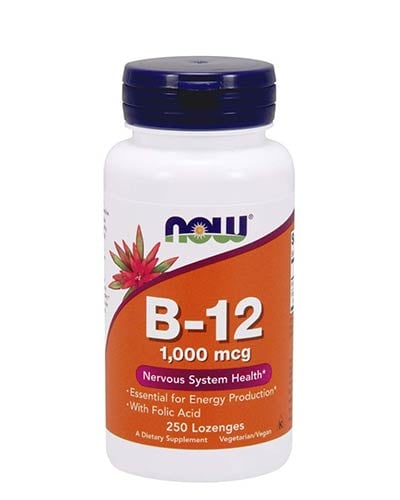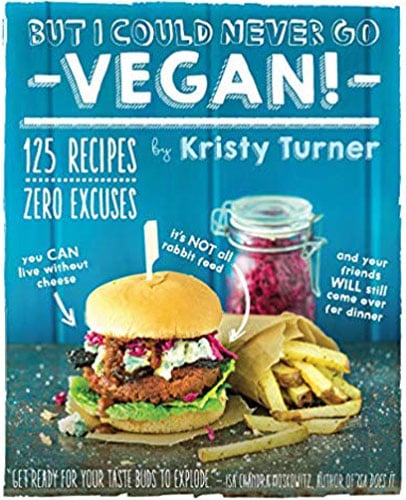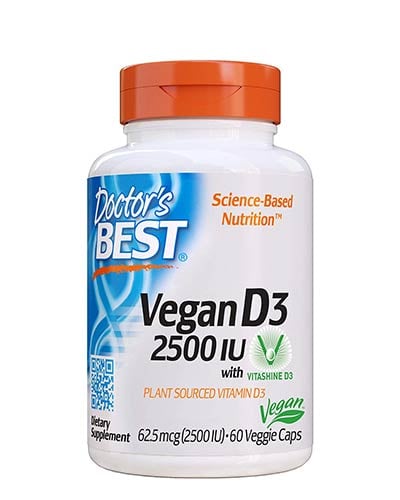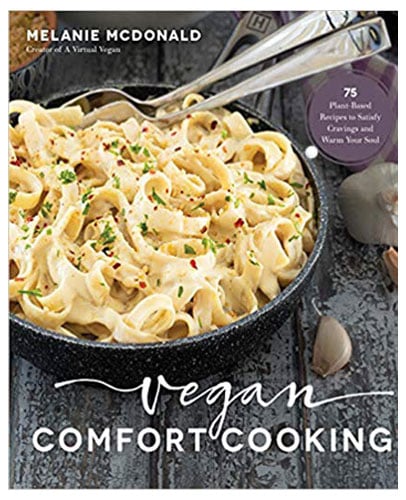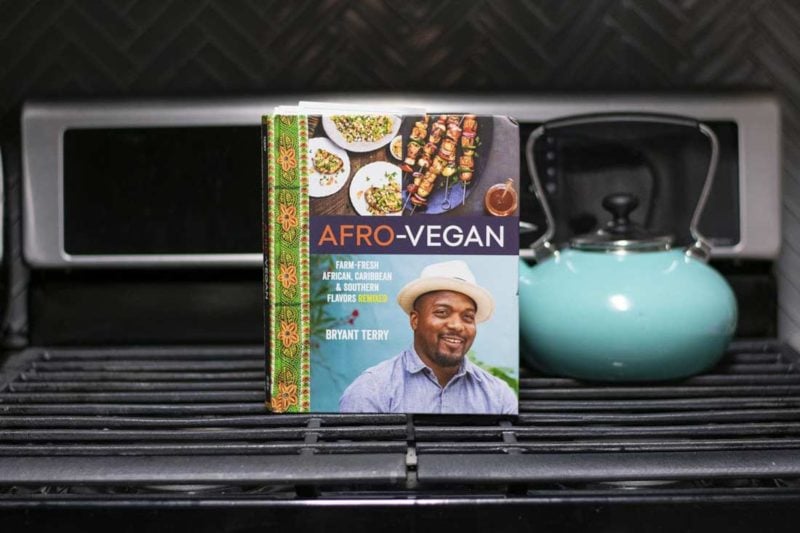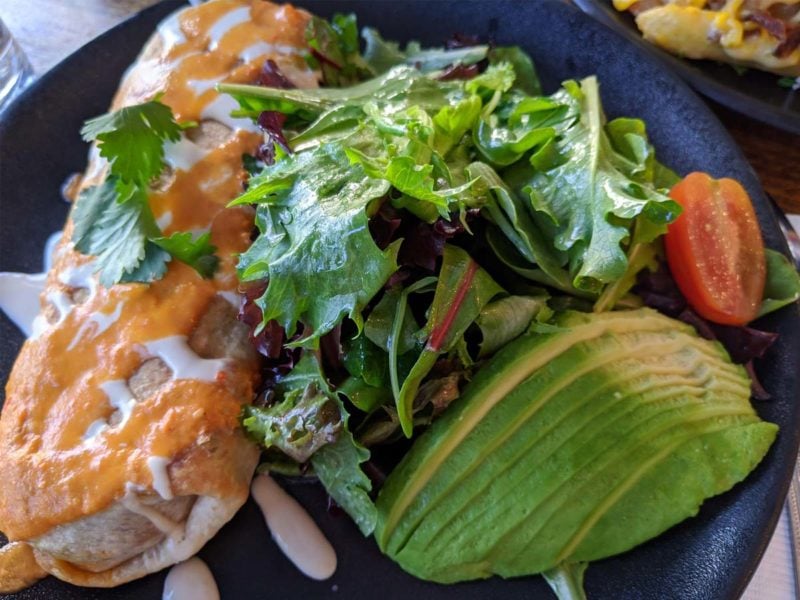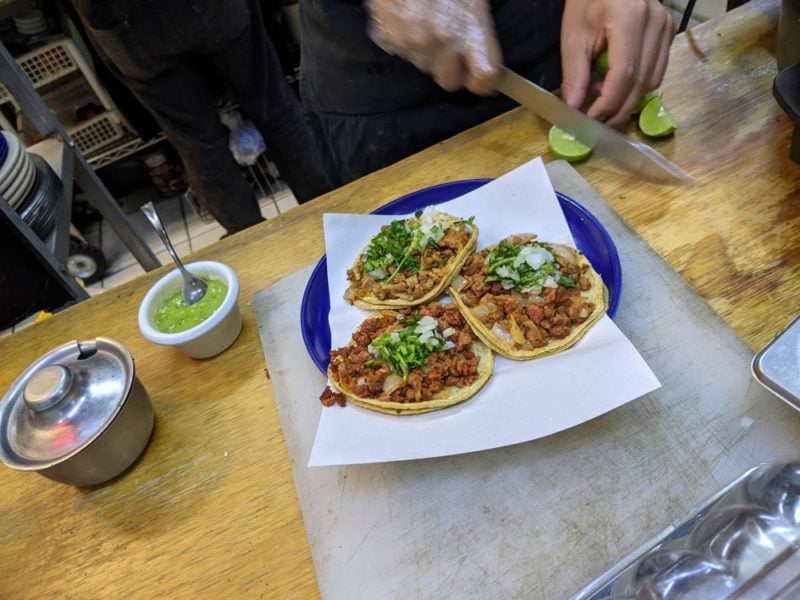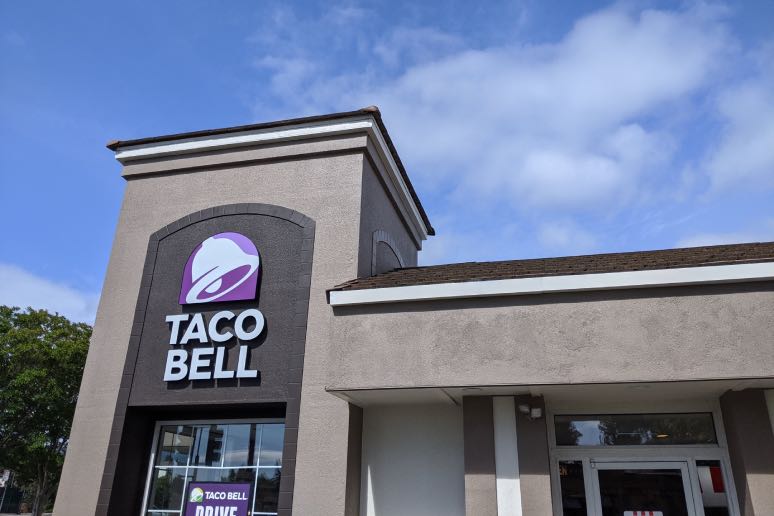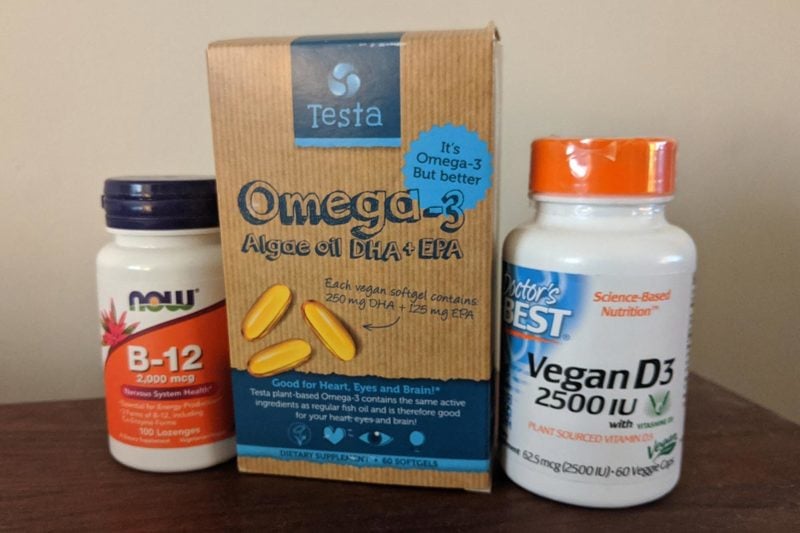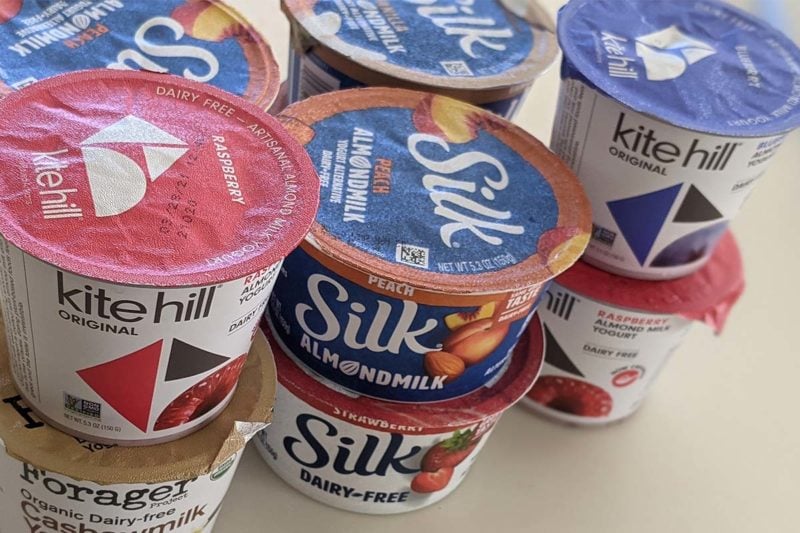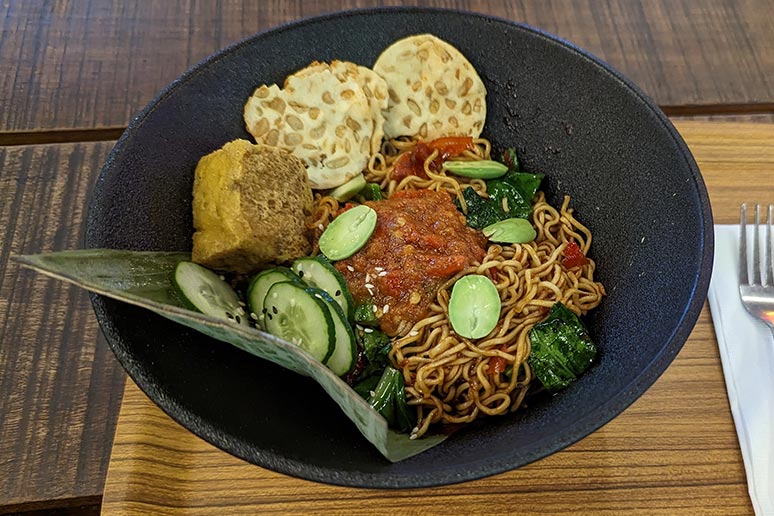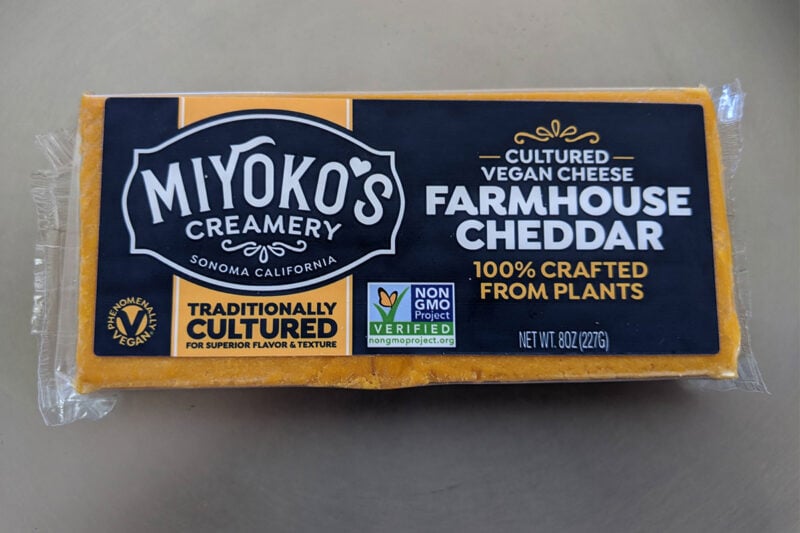Chapter 19
Meat, Dairy, & Egg Replacements
When the subject of veganism comes up, omnivores often say, “I could never give up cheese,” or, “I like a good steak now and then.”
So in this chapter, we will go through the main sorts of animal products that people eat, and we will consider the vegan replacements that exist. Some of the vegan foods we’ll look at are either indistinguishable from the non-vegan foods they replace, or are close enough that it hardly matters. The best brands of vegan mayonnaise, ice cream sandwiches, soy yogurt, and ground meat substitutes fall into this category.
We’ll also look at some vegan foods that bear only the slightest resemblance to the non-vegan foods they replace, but are still wonderfully tasty items in their own right. In fact, you might end up liking some of these foods much more than the animal products you formerly ate. Two of these not-even-close yet delicious replacements are sautéed portobello mushrooms instead of hamburgers and scrambled tofu instead of scrambled eggs.
While I think there are tons of fantastic items that can satisfy your cravings for meat, milk, and eggs, I’m not going to suggest that every such substitute is wonderful. In fact, some meat and cheese replacements are simply disgusting. Back in the 1980s, many of the meat and cheese substitutes on the market were simply terrible; a culinary assault on the tastebuds. Happily, today there is too much competition in the vegan marketplace for inferior foods to survive.
So now let’s consider some great replacements for meat, dairy, and egg-based foods.
Meat
I once had a conversation about meat substitutes with Jennifer Raymond, one of the most successful vegan cookbook authors of the 1990s. She told me:
If somebody likes the textures, flavors, and the spices that are commonly associated with meat, I can give them vegan foods that have all these things. But if that person insists on the experience of eating a T-bone steak, well then they’re out of luck. There’s nothing in the vegan world that will replicate an intact piece of cow muscle.
It’s been nearly a decade since I had that conversation with Jennifer, and in that time the fake meat options have only gotten better. While there’s still nothing at all like a T-bone steak, there are now some exceptional vegan meat replacements. My favorite brand is the ground meat and seafood products made by Match Foods, Inc. The ground beef, pork, and chicken versions of their products are note-perfect replacements for meat—they could absolutely fool a meat eater.
Comparably great are the products created by the Field Roast Grain Meat Company. These are distributed to natural food stores throughout the United States. I consider their Celebration Loaf to be the centerpiece for the best Thanksgiving-style vegan dinner you could possibly serve.
Tofurky brand sausages are also good, with the Italian style being their best offering. Every once in a while, I like to go all-out cooking on a weekend morning: fried potatoes, sautéed kale, pancakes, and sliced and pan-fried sausages from either Field Roast or Tofurky make for the ultimate vegan brunch.
Let’s now turn to meat substitutes that won’t fool anyone, but can be delicious in their own way. My favorite of these is falafel, which I’ve talked about earlier in this book. Falafel is a Middle Eastern deep-fried meatball made from chick peas, garlic, and parsley. Served in pita bread with some veggies and tahini sauce, you’ve got something way tastier than any burger.
Another delicious meaty sandwich is made from pan-fried portobello mushrooms. Just remove the woody, inedible stem and fry each side of the cap in a bit of oil over medium heat for a minute or two, then serve it on a hamburger bun with all the fixings. These mushroom caps happen to be exactly the size of a large hamburger patty.
There are a number of dishes where you’ll want the chewy texture of meat, but don’t really need meat’s flavor. For this sort of thing, frozen tofu is hard to beat. Just buy a package of tofu, cut it into slices, then freeze the slices overnight. The freezing will dramatically change the tofu’s texture, giving it a meaty chewiness. And since nothing compares to tofu in terms of soaking up surrounding flavors, this is a terrific choice for use in dishes that have spicy, rich, or flavorful sauces. Small slices of frozen tofu are outstanding when added to vegan chili.
As with frozen tofu, tempeh is another great choice to lend a meaty texture to a vegan dish. Nearly all vegan cookbooks feature a few tempeh recipes, so give one of these meals a try.
Dairy Products
Let’s cover the best dairy alternatives first: there are vegan brands of ice cream and yogurt that are incredible. Specifically, the vegan ice creams made by So Delicious and Double Rainbow are to-die-for. The best thing So Delicious makes is their coconut-based ice-cream. Double Rainbow makes both dairy and vegan ice creams—their Very Cherry Chocolate Chip flavor is magnificent. Trader Joe’s sells this product at a fantastic price under their own private label brand. Finally, WholeSoy makes a frozen soy yogurt that contains about half the calories of vegan ice cream, yet offers exceptional flavor.
When it comes to soy yogurt, I don’t know of a bad brand. I think that when yogurt bacteria go to work, the sour flavors produced become dominant and so the yogurt’s flavor doesn’t differ by much whether the base ingredient is cow’s milk or soymilk. I can strongly recommend any of these brands: White Wave, So Delicious, Silk, and Wildwood. Nancy’s, a company known mainly for dairy-based yogurts, also makes a line of excellent soy yogurts—and after years of complaints from vegans they finally responded and got rid of the honey.
Ten or twenty years ago, just about every brand of vegan cheese was a grotesque abomination. You’d heat it in the oven and it wouldn’t actually melt. If you were lucky, it would start perspiring and soften like vinyl left out in the sun. The stuff tasted horrible and would seemingly sit in your stomach for days without digesting.
Today, most brands of vegan cheeses are at least tolerable, but you’ve still got to be careful when purchasing the stuff. Always check the label for casein, or some chemical with casein as part of its name. Casein is a milk protein, and unfortunately several companies manufacture casein-based soy cheeses without disclosing on the label that this ingredient comes from milk.
I rarely eat commercially-produced vegan cheese, but I do like to use it for the occasional grilled cheese sandwich. My favorite type of vegan cheese is the one I make myself. Appendix D contains my recipe for cashew cheese, which I think makes a delicious pizza topping. I’ve been getting requests for this recipe ever since I mentioned it in my first book.
One final recommendation where cheese is concerned: there are vegan brands of cream cheese that are surprisingly good. Lightly toasted raisin bread with vegan cream cheese, sprouts, and chopped walnuts is one of my favorite treats.
It’s funny that so many potential vegans fret about giving up cheese, yet I don’t think I’ve ever heard a single person voice misgivings about giving up milk. The reason, I think, is that most people don’t terribly enjoy the flavor of milk. In fact, most vegans end up saying they strongly prefer the flavor of soy, rice, or almond milk to anything that comes out of Bessie’s mammary glands.
Admittedly, milk does excel in coffee. Regular soymilk does not blend into coffee the way milk does. And, of course, many coffee drinkers really want cream or at least half-and-half in their coffee. Some coffee drinkers will view a switch to soymilk as perfectly fine, while others will regard it as a heavy blow. Fortunately, Silk makes a product especially for coffee that blends like cream and carries a rich and pleasant taste—this “Silk Creamer” product comes in three flavors.
Let’s end this section on dairy products with a mention of butter. Earth Balance has a stranglehold on the vegan butter market, and for good reason. The stuff is cheap and delicious, and there’s even an organic whipped version. But I’d lose all credibility if I tried to claim that Earth Balance is the flavor equal of real butter. Butter simply has some delicate flavor notes that may never be perfectly captured in a soy-based product. That said, in many recipes, you won’t taste the difference by using Earth Balance.
Eggs
For their binding properties, many people consider eggs to be an essential ingredient for baked desserts. Fortunately, nothing could be further from the truth. Anyone sufficiently knowledgeable about how to use ingredients like ground flax, apple sauce, and tapioca will lose no kitchen powers by swearing off eggs. And for general baking use, a widely-available product called, sensibly enough, “Egg Replacer” stands in reasonably well in most recipes. The best cookie and the best brownie I’ve ever eaten have both been vegan, and there are any number of vegan cookbooks that offer up sensational egg-free baked desserts.
There is even a great vegan omelet I can recommend. Susan Voisin at FatFreeVegan.com has posted a “Vegan Omelet for One” recipe. If an omelet seems too fancy, try a tofu scramble: an egg-like meal so simple it hardly requires a formal recipe. Just sauté some sliced onions, garlic, and peppers, add some mashed firm tofu, and then stir in some nutritional yeast and tamari before serving.
Gaining More than Losing
One of this book’s themes is that a successful transition to being vegan requires that you focus on adding foods to your diet, rather than putting effort into subtracting foods. Undoubtedly, if you’re a big fan of T-bone steaks or sunny side up eggs, a vegan diet means doing without a convincing replacement. But as we’ve seen in this chapter, most other animal products are easily and gracefully replaced by a variety of vegan items. In terms of the pleasure you take from eating, the foods you’ll discover should more than make up for the foods you subtract.
Next Chapter: Outfitting Your Kitchen
Return to: Table of Contents
Get the updated second edition of this book on Kindle for just 99 cents, or in paperback for $8.95.
This page and The Ultimate Vegan Guide is Copyright 2010 by Erik Marcus, all rights reserved. My writing is my sole means of support, so please don’t abuse the generosity I’ve shown in making the full text of this book freely available from Vegan.com. Posting the text of this book to other websites, and copying or distributing it through other means, is strictly prohibited.

